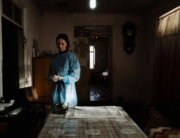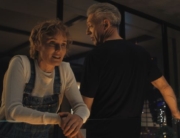Moviegoers who have always meant to read a novel by Colette (1873–1954), or are only familiar with her work from the sumptuous MGM musical of her novella Gigi, will receive a not-so-gentle nudge to pick one up, now that their curiosity has been piqued by this biopic of the trailblazer’s nascent writing years. (The Vagabond would be a good place to start.) After premiering at Sundance, Colette begins its brief fall festival run at the Toronto International Film Festival and will open in theaters on September 21.
Wash Westmoreland’s handsome and earthy depiction of the celebrated French writer offers a showcase for star Keira Knightley, who gives her best performance to date. The actress may not closely resemble the writer physically in any apparent way, but part of her charm is her subtle transformation from a pigtailed country girl to a music hall performer/provocateur—and especially the change in her character’s physicality. When Colette becomes more confident, Knightley strides in a drawing room, nearly leaning forward, shoulders first. The strident restlessness recalls rebellious convention-busting 1930s actresses like Marlene Dietrich.
Often in her work (The Duchess), Knightley has a tendency to freeze with tension in key dramatic moments, tensing up around the mouth and jawline. Here she is free and loose even when wearing a corset. When tell-tale signs of tightness appears, they are during the most trying moments of Colette’s marriage to the older writer, and her publisher, Henry Gauthier-Villars, aka Willy, played with a gleeful arrogance by Dominic West, who proudly preens with his protruding paunch. Though the script centers on her marriage, the focus is actually more on her emancipation from what becomes a one-sided business partnership.
The screenplay, like most of its ilk, hits the bullet points of its subject’s life, but it also gives the actors room to grow. The result is much more than a summary of the author’s time line. It also refrains from painting her as solely a victim in her relationship with Willy, who controlled and manipulated her. At first, Colette is clearly complicit along with her husband in perpetuating a charade: Willy takes credit as the author of the wildly popular “Claudine” books, the sexually frank (for their time) novels inspired by Colette’s transition from adolescence to a Parisian adulthood, which she actually wrote. She beams with pride as Willy accepts accolades and becomes the toast of Paris when the first novel, Claudine at School, is turned into a hit play.
However, Colette’s relationship with her mother arguably does not receive the screen time that it deserves, considering her influence in her daughter’s life. The movie also gives in to the biopic trope of a time-leaping montage, here depicting the runaway success of the Claudine books; women of all classes and backgrounds devour copies fresh off the press and read it in all places public.
Though the film is more beautifully decorative than any film has a right to be, the filmmakers never shy away from what helped her work stand out: sex is never far from the surface, and not as subtext but forthrightly out in the open. Collette’s relationships with women are depicted straightforwardly, a cross between the soft focus love-making of Susan Sarandon and Catherine Deneuve in The Hunger and the frankness of Blue Is the Warmest Color.
The film also becomes a runway for costume designer Andrea Flesch, from Colette’s frilly flocks to her male attire (about 25 years before Dietrich donned a tux in Morocco). Additionally, the original Satie-inspired music score by Thomas Adés smoothly blends in with the soundtrack steeped in the classical music hits of the era, such as by Sant-Saëns (the ubiquitous The Carnival of the Animals) and Debussy.
All around, a class act.







Leave A Comment